The Invisible Man's Revenge, The Mummy's Ghost (1944)
Directed by: Ford Beebe, Reginald LeBorg
Written by: Bertram Millhauser, Brenda Weisberg, Griffin Jay, Henry Sucher
Starring: John Carradine, Jon Hall, Leon Errol, Lon Chaney Jnr, Ramsey Ames, Robert Lowery
Robert Griffin returns to London after five years of memory loss following a diamond field expedition in Africa. A newspaper clipping reveals Griffin to be a homicidal maniac who had escaped from a Cape Town asylum. He locates Sir Jasper and Lady Irene Herrick, friends and former partners of the expedition. Griffin claims that they had left him for dead and taken half of his share of some diamonds, which enabled them to buy their luxurious mansion and start up Herrick Mines Ltd. He demands the share of the fortune due him and discovers their daughter, Julie, his former girlfriend, to be engaged to Mark Foster, a reporter. Griffin is drugged and thrown out but then stumbles upon the home of Professor Drury, a scientist who has discovered the formula of invisibility. Seeing that Drury has already made some animals invisible, Griffin, wanting revenge, volunteers on becoming Drury’s human subject….
The Invisible Man’s Revenge is to me the weakest of the Universal Invisible pictures, an uneven, awkward picture that is still certainly enjoyable, but gives the impression of having been written in a rush. The attempt seems to have been to makes a darker, more serious film about an invisible person, though the odd comedy sequence does remain, and the movie as a whole never finds a consistent tone. It’s interesting in that it’s the only one of the series that has an Invisible Man who is almost entirely unsympathetic right from the offset, but hints that this is going to be a really gripping and even frightening Invisible Man picture, really taking advantage of the nasty and scary things an Invisible Man can do, are not followed through. As I said before, it’s not really a bad picture, but considering how much fun all the Invisible films have been up to now, it came as a bit of a disappointment to this writer, who was watching most of these films for the first time [these ones were usually shown separately to the other Universal monster movies on TV, probably because they are less horror-orientated].
The script for this one was written by Bertram Millhauser, who wrote five of the Universal Sherlock Holmes movies including one of the best, The Spider Woman, but he clearly had an off-day when he wrote The Invisible Man’s Revenge. His screenplay, which has no connection whatsoever with the previous Invisible Man films despite featuring a guy whose surname is Griffin, gives the impression of being dashed off over one day, which perhaps it was, but more on the plot’s problems later. Director Ford Beebe, usually making ‘cliffhanger’ serials, had recently made the very effective film noir/horror Night Monster, which has one of Bela Lugosi’s best performances. This probably explains why he got the job on this movie, but he didn’t seem interested in giving Revenge much of the atmosphere and style of the previous film. Jon Hall, from Agent, also starred in Revenge, making him the only actor to play two separate invisible characters. Revenge did okay at the box office, but it marks the beginning of the time where receipts for Universal’s horrors were starting to decline somewhat in number.
Revenge certainly starts off well, with our anti-hero arriving in some moodily lit London dockland set, then turning up at the house of his two former partners. Straight away, this is one Invisible Man we just don’t like very much. This psychopathic killer, who has already slaughtered two prison guards upon escaping from the South African asylum in which he was being kept, may very well have a case in wanting his share of the fortune back, but the script refuses to actually state whether this is true or not, and I wondered if it just could be his delusions. I don’t think Millhauser thought things through in writing the film though; the many ambiguities that exist seem to be the result of carelessness rather than leaving some things up for an intelligent audience to work out for themselves! It’s interesting that almost every character is painted in shades of grey rather than black or white, with even Griffin having a few scenes where you are meant to like him, but they seem out of place. Best amongst these is a hilarious darts scene where he helps his drunken bum of a friend Higgins win a game in a pub; the darts slowly hit the target as the invisible Griffin is obviously just carrying them over and planting them on the board!
The film frustratingly leads us to believe things will happen that then don’t. This Invisible Man goes on about carrying out a vicious revenge, but doesn’t actually do much at all besides threatening people with a knife and ensuring someone is killed off screen, and he even carries out some of his tasks while totally visible. On a couple of occasions it seems like we’re going to get a subplot involving Griffin and his ex-girlfriend, but we don’t, with Evelyn Ankers totally wasted in this particular film. Other plot threads virtually disappear, though I do like the way we are given more and more detail about Griffin’s back story throughout the film. Sadly though the picture only builds up mild tension, with a rather stop/start pace, though there are some unintended laughs to be had from some things that occur in the climax, like a chained dog who is mysteriously free the next scene. Said dog then becomes virtually the hero of the piece.
Of course John P. Fulton’s special effects are still good. Perhaps because this had a lower budget and therefore Fulton had less time to do the effects, I could see the outline of Griffin’s head when he is wearing clothes a couple of time, but scenes where he puts shaving cream on the front of his face, and fades away on first being administered the invisibility drug are very impressive. The wire work, where Griffin holds things, is the best in the series, and one scene where he first dips his hand in a fish tank, revealing the watery outline of his hand, then has his face, again outlined by water, appear in a mirror to scare his victim, is very effective indeed. he scene carries with it a real charge of horror, something that is mostly missing from the film despite it being a darker tale than normal for the series. It also shows that Fulton was doing his best to experiment with and vary his effects. Just imagine what he could have done with this concept with a bigger budget?
Jon Hall is much stronger here than in Agent; constantly barking out orders, his voice has a real evil tone in it even if I still miss Claude Rains or Vincent Price. Comedian Leon Errol is quite a decent foil for him as his alcoholic pal though for me the standout of the film is John Carradine, in his first Universal horror role. As Professor Drury, he gives a very detailed variation on the typical Mad Scientist, filtering some humanity and even humour through his performance while dominating every scene he is in. Composer Hans J.Salter wrote an original score for this film and it does the job while not being nearly one of his best. His theme for Griffin, threaded nicely throughout the score, is suitably dramatic but is rather forgettable and a more dissonant, eerie motif used as a kind of ‘madness theme’ is more effective, while on other occasions it seems the composer is trying to give him more feeling than the film actually suggests. Despite its general mediocrity, I still just about enjoyed The Invisible Man’s Revenge; it entertains if you don’t expect much, but it clearly shows the studio running out of ideas for the subject, a shame as the Invisible Man series shows quite a bit of invention for the most part.
Rating: 









In Egypt, Andoheb, High Priest of Arkhan, entrusts a mission to his latest disciple, Yousef Bey: to go to Mapleton, Massachusetts, find the bodies of Kharis and Ananka, who had been Kharis’s secret love thousands of years ago, and return them to their rightful resting place in Egypt. Yousef is to brew the tana leaf fluid and Kharis will find him. Meanwhile at a college campus in Mapleton, student Tom Hervey is dating Amina, who is of Egyptian descent and researching Egyptian history, which brings on a strange, clouded feeling in her mind. One of the teachers, Professor Norman, has some tana leaves and is doing research on them. He deciphers some hieroglyphics on how to brew them and goes ahead with making the fluid, but then Kharis appears to kill him….
The Mummy’s Ghost is my personal favourite of the 40’s Mummy pictures, adding the interesting reincarnation element that had been at the forefront of the original The Mummy film back in 1932 to the ‘Mummy stalking people in America” plot of The Mummy’s Tomb. It’s not really a classic and blatantly copies the previous movie in places, but is also quite intriguing and one almost wishes it wasn’t constrained from the task of being a typical “get the job done quickly and cheaply” Universal B-Movie so it could explore some of its ideas in more depth and actually make a bit more sense; as it stands, things don’t make much sense at all, especially towards the end. It’s one of those films that gives the impression of being cut down to the essentials and I would have liked it to be a bit longer and less vague. It remains though a rather haunting and sometimes very atmospheric piece that certainly has some artistic merit.
Once again Griffin Jay had the major part in writing the movie, aided by Henry Sucher who had contributed to the last entry, but this time Brenda Weisberg made contributions, a good idea since the lead female character in this one is just as prominent as the Mummy so it made sense to employ a female writer. Director Reginald LeBorg was another ‘B’ director with some style; I am especially fond of two interesting horror movies he made in the 50’s; Voodoo Woman and The Black Sleep. Originally The Mummy’s Ghost was going to star Acquanetta [actually Mildred Davenport], a stunning beauty and minor ‘B’ star of the time [Universal billed her as ‘the Venezuelan Volcano” even though she was from Wyoming]. On the first day of shooting though, whilst enacting a fainting scene she fell on a rock she thought was papier mache but was actually real, and was hospitalised. Universal replaced her with Ramsey Ames, who was probably more suited to the role as she looked more Egyptian, though once again this pretty starlet was American. As was par for the course now, the movie got poor reviews which mostly ignored its interesting aspects, but the box office receipts were fairly strong.
As with Tomb, there is rather too much time taken up with exposition at the beginning, but at least it’s not ten minutes of footage from Hand this time, and the film shifts nicely from Egypt to America and back again several time before this particular priest sets off on his mission. It is of course ludicrous that Andoheb is still alive after us having seen him die twice already, and the keen-eyed will notice that the shot of Yousef going up the steps of the temple is from Hand and is actually of the younger Andoheb, meaning that Yousef looks like he has lost a huge amount of weight in the next scene. Interestingly, we don’t actually see Andoheb die this time, though he didn’t appear in the next episode anyway. As we are introduced to our American characters, all this exposition is quite pacy, though overall this is a slower-paced film than Tomb, with the Mummy stalking and killing far less, though it’s still nice and tight. The Mapleton setting is far more modern in feel than the unnamed [apart from it being in Massachusetts] locale in Tomb, and this is one thing I really like about the Mummy pictures; each one varied the setting, helping to give each movie a slightly different feel.
Though he’s on screen slightly less [and you wouldn’t know he had been burnt to a crisp at the end of the last one, as he looks just the same as he did before that fire] and the film feels less brutal, Kharis still has one rather nasty kill, this time where he smashes a guy’s head into some glass before strangling him. Lon Chaney actually injured himself badly in a similar scene where Kharis trashes a museum. He drove his fist through real glass, and a shard of it flew up and cut him through his mummy mask in his chin. If you look closely, you can actually see him bleeding in the scene. It gives an edge to what is a rather haunting scene anyway, with Kharis touching the mummy of Ananka, causing it to crumble into dust and Amina to wake up screaming, as if Ananka has now possessed Amina. Some of the reincarnation/possession stuff is muddled though. Amina gets possessed about half way through, but in the first half she appears to be some kind of reincarnation of Ananka too, or if not, certainly someone who has some connection with Kharis. Two scenes in which she sleepwalks and faints before the Mummy have great atmosphere to them [despite the night being far too bright as usual], and I love the way she seems to gradually become Ananka, from initially just sporting a white streak of hair to actually aging Lost Horizon-style at the end, but this fascinating stuff doesn’t appear to have been thought through properly at all.
Still, it gives an odd and even slightly romantic edge to a movie that in other aspects bears the typical ‘B’ flaws, such as characters who behave and even speak stupidly and the way they forget and remember things. We also have a sleepwalker who sees things, a learned Egyptologist who has only a minor knowledge of hieroglyphics, and a Mummy who may have a really bad, seemingly useless arm but doesn’t seem to have any trouble carrying Amina off. For the third time the priest in the story decides he wants the heroine for himself and pays for it with his life. The tale rather oddly but nicely has a rather cute dog plays a major part in saving the day, though actually nobody except for the typically bland ‘hero’ is actually saved. The well-managed swamp climax is actually very downbeat in nature, yet does round off the story of Kharis and Ananka rather nicely. They really didn’t need to do another Mummy picture.
LeBorg doesn’t seem too interested in trying to frighten; instead, the director tries to create a more atmospheric piece and sometimes succeeds with some almost beautifully composed shots and less noise than before, though of course the recycled music keeps on going and going. Chaney, even more than before, is somehow able to show some pathos for Kharis; when he looks at Ananka and then smashes things up, you feel his frustration. I’m not even sure he enjoys strangling folk this time round. He just seems to want to be with his beloved. Sadly Ames is stiff and not up to the complex part of Amina, and Robert Lowery is even weaker as Tom. John Carradine displays considerable menace as Yousef though doesn’t even attempt to sound Egyptian. The afore-mentioned score is the usual stuff we’ve heard before, though this time with some of the eerie organ music from Son Of Dracula added. There is something about The Mummy’s Ghost, despite its carelessness and signs of being very rushed, which is quite compelling and makes it stand out. Interestingly, Hammer’s 1959 The Mummy basically rolled Hand, Tomb and Ghost all into one and copied Ghost’s climax [though without the aging heroine]. I wonder, though, if taking Ghost as the major source of inspiration for the next, already announced Mummy move, would be a good idea? Any executives reading this….?
Rating: 










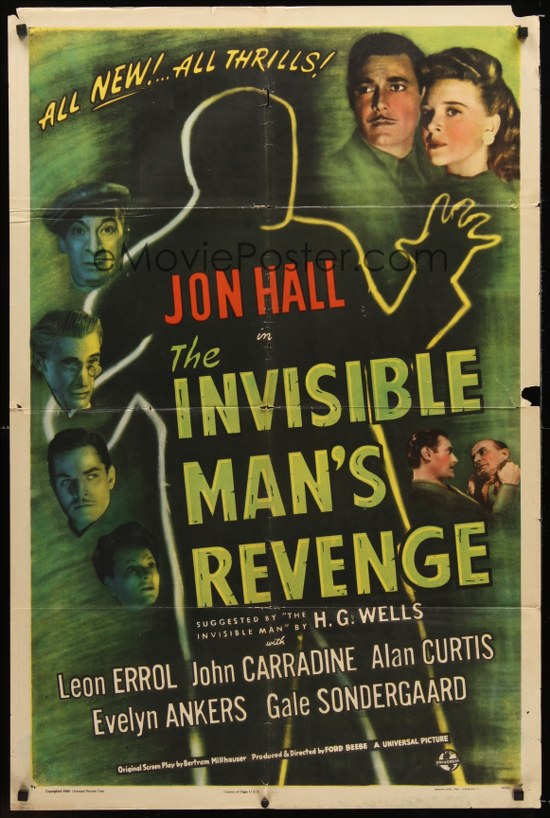
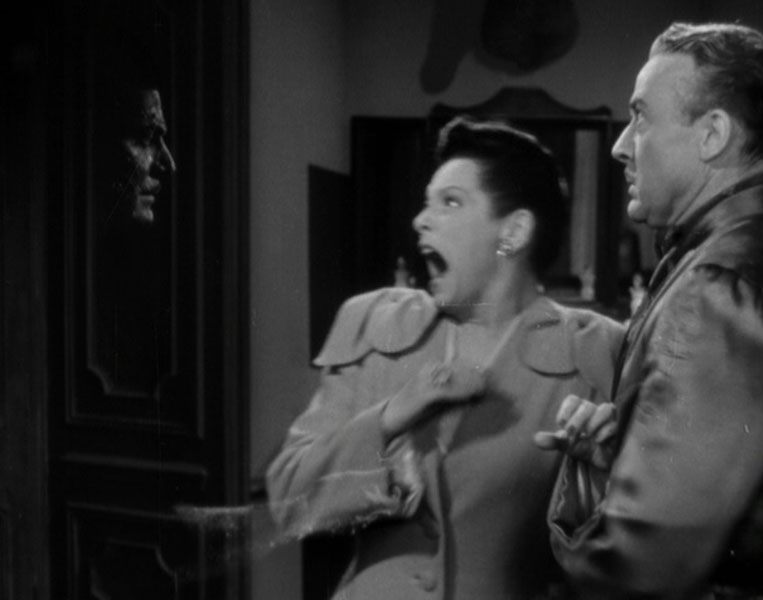
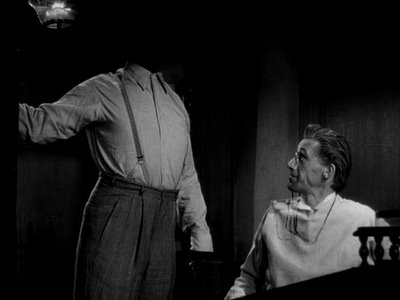
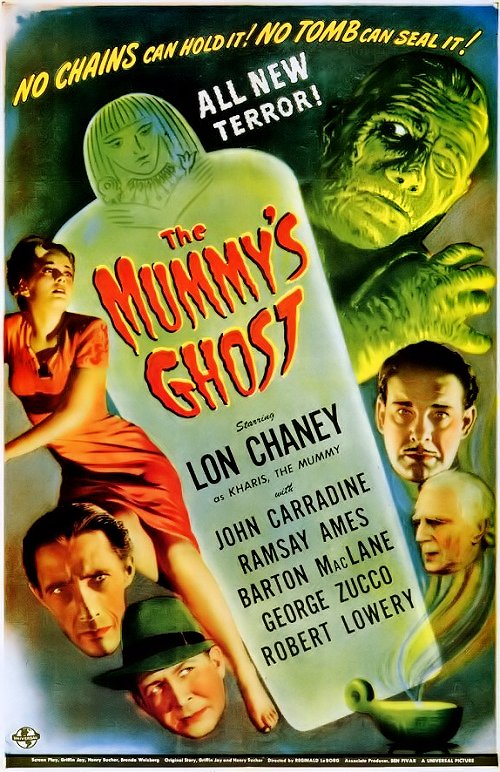
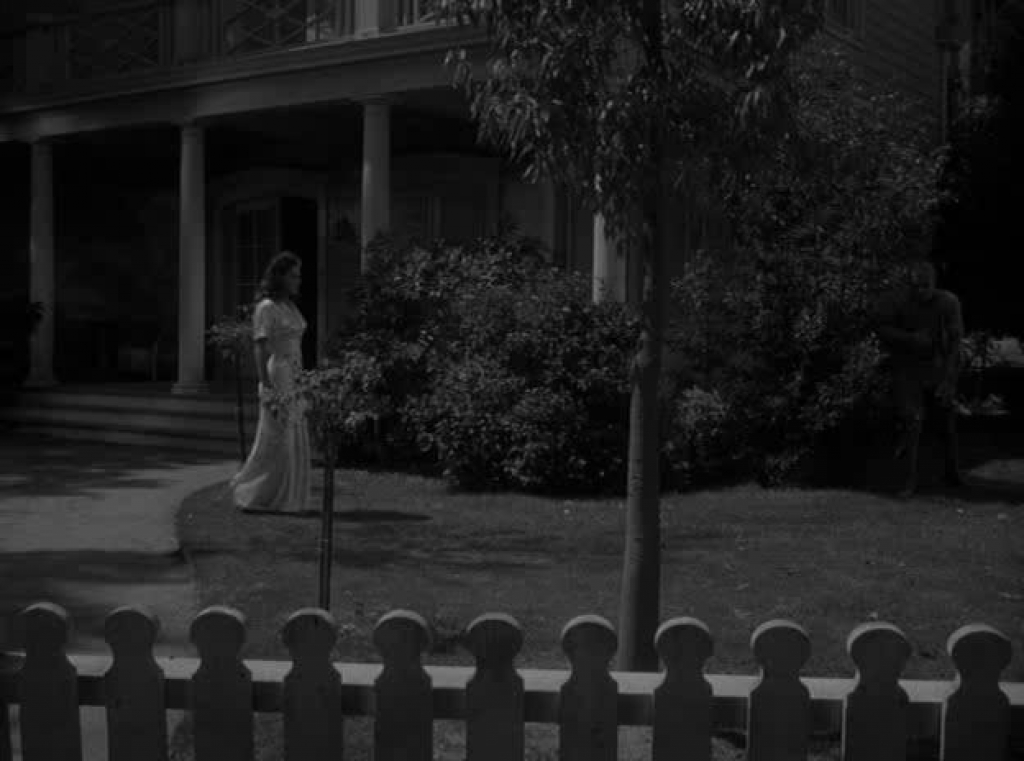
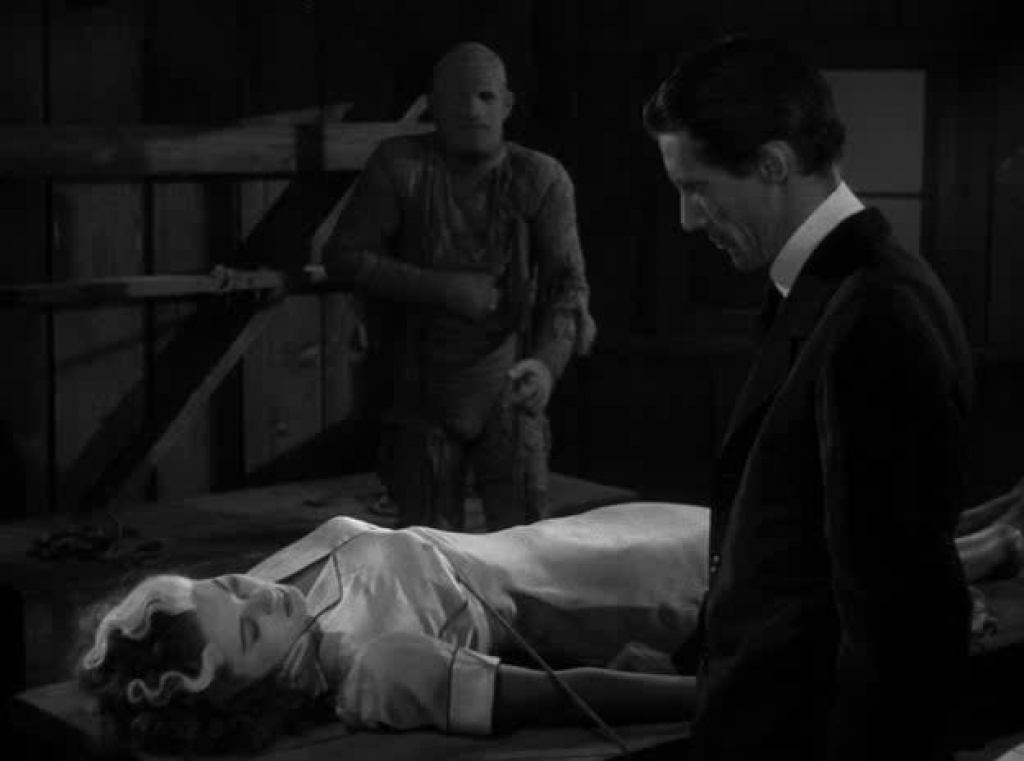

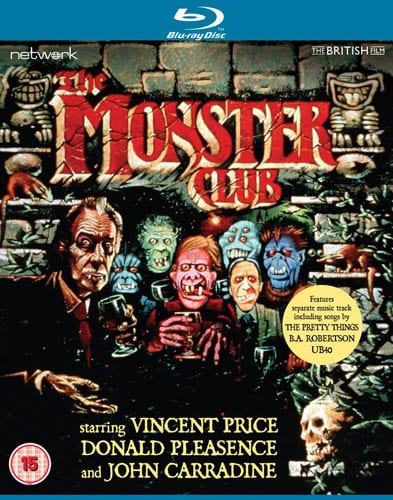
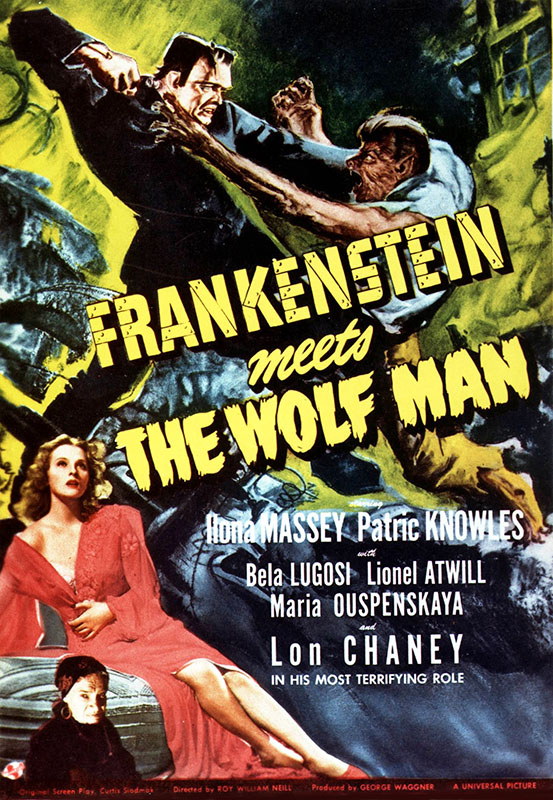

Be the first to comment